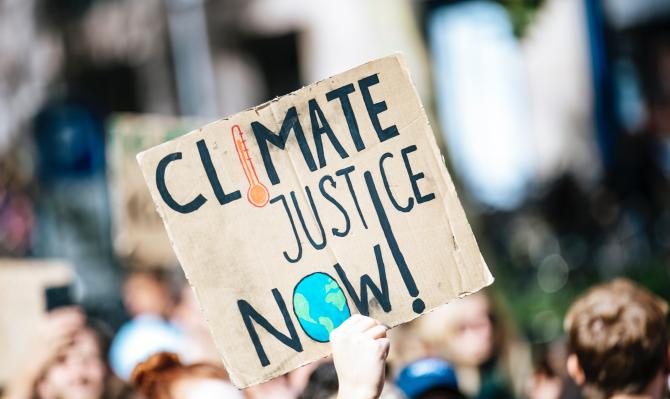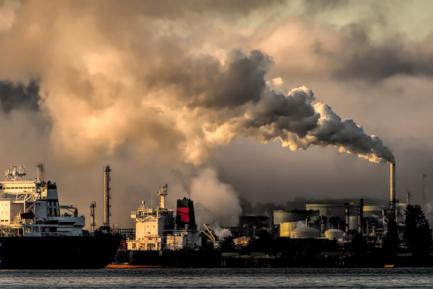Climate change and financial markets
In this article, we analyse the impact of the green transition on the financial markets by contrasting the effects of an orderly climate transition with those of a disorderly one.

The COVID-19 pandemic has made it all too clear that events which we consider unlikely to occur, but which have a high impact, can end up materialising. In the coming decades, these phenomena, known as black swans, could become increasingly frequent and even change colour: the serious consequences of climate change could lead to green swans, especially if the transition to a sustainable economic model is not properly managed. In this article, we analyse the impact of this transition on the financial markets by contrasting the effects of an orderly climate transition with those of a disorderly one.
In an orderly transition, the transformation towards a decarbonised economy takes place gradually and with adequate planning. As part of this process, there are regulatory changes (such as imposing strict limits on carbon emissions), fiscal changes (such as increased taxes on polluting emissions), and technological changes (such as the adoption of fully electric transportation systems or carbon capture techniques). These changes should, on the one hand, lead to an increase in funding needs (both public and private) throughout the transition period and, on the other, promote the development of new metrics and criteria to better identify environmental sustainability across sectors, companies, projects and products. As an orderly transition, the investment needs can be spread over time, so the increase in funding costs should, on average, be small. However, better identification of green investments would lead to an increase in the dispersion of these financing costs and also in the relative price of green assets compared to brown assets (the so-called «greenium»). This, in turn, would also generate persistent effects in the commodity markets, such as price increases among commodities used in less carbon-intensive sectors.1 At the same time, new sustainable financing instruments (such as the expansion of markets for green bonds or subsidised loans)2 should be given a major boost.
- 1. The rise in the relative price of commodities required for renewable energy generation and storage, such as cobalt, will be significant compared to oil. See International Energy Agency (2021). «The Role of Critical Minerals in Clean Energy Transitions». World Energy Outlook Special Report.
- 2. Like green bonds, a subsidised loan would involve a «green premium» (e.g. a lower interest rate) for projects that meet certain environmental targets.

As we are in the initial stage of a climate transition right now, it is worth asking whether some of these effects we have just described are already visible. Indeed, in an environment in which investors are beginning to take climate risks seriously (including both physical and transition risks),3 the internalisation of these risks is beginning to be partially reflected in financial asset prices. That said, it is still early days and their degree of incorporation largely depends on the quality of the information published,4 as well as on investors’ knowledge.5 Specifically, the available evidence shows that exposure and vulnerability to climate risks are being reflected to some extent in the sovereign debt market, penalising regions with greater exposure to physical risks and less capacity to respond. In particular, it has been estimated that the difference between the regions of the world that are most and least exposed to these risks is around 200 bps on average over the period 1995-2017.6
These results suggest that the economic players participating in the sovereign debt market take the scientific evidence on the effects of climate change into account, probably due to the existence of a sufficient quantity and quality of public information on the physical risks of climate change at the geographic level. Indeed, the scientific consensus tells us that the physical risks of climate change will be asymmetric – they will vary depending on each country’s geographical location, economic structure and institutional capacity – and non-linear. In addition, we already have a physical risk index for each country, calculated using the INFORM risk model, based on their exposure to these risks, their vulnerability and their ability to mitigate them.7 After analysing this index, we can highlight three elements. Firstly, mitigation and adaptation strategies have already had positive effects since 2012 in some regions of the world, as shown in the first chart. Secondly, the geographical distribution of the risk is uneven. Finally, the risk is asymmetric, since more than 70% of cumulative global emissions originate in countries with low physical risks, according to data from the Global Carbon Project. This implies that the physical costs of climate change are highly unlikely to directly affect the worst-emitting regions and that the design and implementation of adaptation and mitigation plans, supported by international cooperation mechanisms, will be essential.
In the case of equities, some asset prices do not seem to adequately incorporate relevant climate risks, which is consistent with the hypothesis that the mechanisms in place for reporting and disseminating more detailed information on climate risks still need to be improved. As an example, there have been no significant changes in the price of assets in the agri-food or real estate sectors, despite the risk of drought or flooding in coastal areas being widely documented.8
In contrast, in the corporate debt market the internalisation of transition risks is already beginning to be reflected in investors’ valuations, as we see an improvement in corporate ratings among European and North American companies which report their carbon emissions, as well as their future targets for reducing those emissions (see second chart). There is also evidence that investors take into account companies’ own carbon footprints and penalise the most polluting among them.9 Moreover, this «green premium» increases in periods when the public impact of climate change is more visible.
- 3. Physical risks are those arising from the exposure of human activity to the natural system, while transition risks are those arising from the regulation that seeks to bring the economy towards a lower level of greenhouse gas emissions and from the transformation of economic activities to meet environmental targets.
- 4. See L. Alessia, E. Ossola and R. Panzica (2021). «What greenium matters in the stock market? The role of greenhouse gas emissions and environmental disclosures». Journal of Financial Stability, 54.
- 5. See P. Krueger, Z. Sautner and L. Starks (2020). «The Importance of Climate Risks for Institutional Investors». The Review of Financial Studies, 33-3, pages 1,067-1,111.
- 6. See S. Cevik and J.T. Jalles (2020). «This Changes Everything: Climate Shocks and Sovereign Bonds». IMF Working Paper WP/20/79. And M. Painter (2020). «An inconvenient cost: The effects of climate change on municipal bonds». Journal of Financial Economics, 135-2, pages 468-482.
- 7. See M. Marin-Ferrer, L. Vernaccini and K. Poljansek (2017). «Index for Risk Management – INFORM Concept and Methodology Report». Joint Research Centre - Publications Office of the European Union.
- 8. See, for example, H. Hong, F.W. Li and J. Xu (2019). «Climate risks and market efficiency». Journal of Econometrics, 208-1, pages 265-281. And A. Bernstein, M. Gustafson and R. Lewis (2019). «Disaster on the horizon: the price effect of sea level rise». Journal of Financial Economics, 134-2, pages 253-272.
- 9. ee E. Ilhan, Z. Sautner and G. Vilkov (2021). «Carbon Tail Risk». The Review of Financial Studies, 34-33, pages 1,540-1,571, in a study on how emissions affect put options of companies that make up the S&P 500.

A disorderly transition would consist of an initial phase of inaction, followed by abrupt changes in the regulatory environment or in fiscal policy in order to contain the risks following the materialisation of extreme weather events and an unmanageable rise in temperatures. In this context, there could be a sudden and significant increase in funding requirements, which in turn would increase the average cost of financing, all accompanied by a dispersion of the costs. Substantial and sudden changes in asset prices would especially affect the assets which bear the brunt of the transition risks, the so-called «stranded assets».10 These trends could be exacerbated by the difficulties many firms would experience in rapidly adapting to a sudden and large-scale transition.11
- 10. One example of such assets is the reserves of unextracted fossil fuels. See J.F. Mercure et al. (2018). «Macroeconomic impact of stranded fossil fuel assets». Nature Climate Change, 8, 588–593.
- 11. See ESRB (2016). «Reports of the Advisory Scientific Committee: Too late, too sudden: Transition to a low-carbon economy and systemic risk». And ESRB (2020). «Positively green: Measuring climate change risks to financial stability».
As regulators and ultimate guardians of the global biosphere, nation states face two key challenges in the coming decades. The first is to develop well-designed regulations which facilitate the climate transition in an orderly manner and with market discipline. In other words, the impact on the financial markets will depend on whether this approach is taken or whether a more interventionist model is chosen involving direct corporate penalties. In this latter case, the increase in funding costs could be higher, even in an orderly transition scenario. The second challenge is to come up with mechanisms for reporting climate information that are transparent and accessible to all. The model that the climate transition finally takes may vary, but it is clear that protecting the planet as a global public asset for all largely depends on the production of another asset with the same characteristics, namely accurate and truthful information on climate risks.




